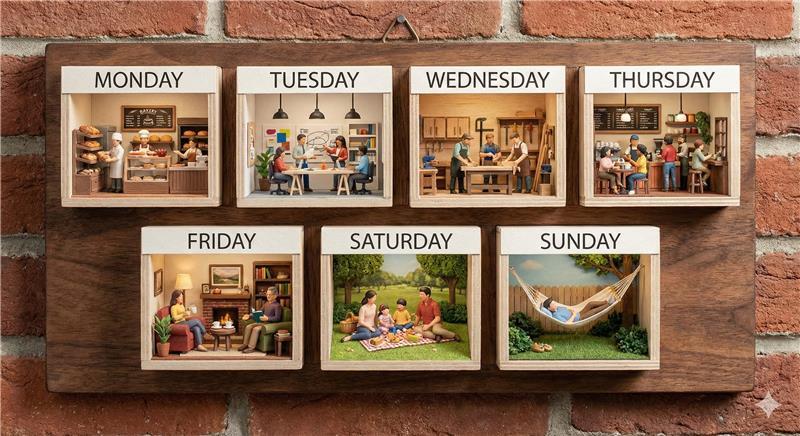How to Know If a Four-Day Workweek Is Right for Your Business
The four-day workweek has become one of the most talked-about workplace shifts of the last decade. Large corporations are experimenting with it....

In a job market that has significantly more job openings than talent to fill them, it is essential that your talent acquisition and onboarding process are as optimized as possible. Otherwise, you risk:
The solution?
Automated onboarding. By automating your typical accounting and HR tasks like onboarding, you positively impact your revenue via less wasted time and more efficiency. In fact, research shows that you can expect to see returns on your investment as soon as 6-18 months.
In this post, we’ll introduce automated onboarding and discuss just how impactful it can be to your bottom line.
Onboarding automation refers to automating the numerous onboarding-related tasks that often take up precious time and are prone to costly mistakes like losing important documents or documentation errors.
When properly implemented, you will be able to tackle tasks like applications, meetings, onboarding documents, surveys, and more with your automated payroll software. This means HR can waste less time getting in touch with new hires to schedule appointments, finding time to fill out the numerous documents required, manually documenting paperwork, and more.
Automation also improves the new employee experience because it opens up time for more important focuses like clarifying job requirements, spending more time training, ensuring the new hire understands expectations and getting new and existing workers acquainted.
Manual onboarding is all your onboarding tasks done by hand. So, all the documents your new hires need to fill out would typically be done by the HR team: printed, sorted, handed out, collected, sorted again, documented, and processed. Other tasks like scheduling meetings would require your HR team to take time to contact new hires, discuss the best times to meet, and get it in the books without human error.
Manual onboarding is time-consuming, tedious, and makes it easy for critical mistakes to be made. What's more, new hire experiences are negatively impacted because too much time is spent on getting them in the system, and not enough time is dedicated to training.
In fact, CareerBuilder's survey found that at least 36% of employers lack a solid onboarding process for their new hires, and around 2 in 5 HR managers are spending three hours or more on each new hire when retrieving onboarding information manually instead of electronically.
This wasted time and subsequent expense that come with three additional hours of work can add up quickly in businesses that have yet to perfect their turnover rates or are currently experiencing immense growth.
When you're ready to advance your onboarding and new employee experience, these three easy steps with Your Payroll Department will get you up and running:
The onboarding process affects your bottom line, both directly and indirectly. Indirectly, you'll benefit from saving time, removing human bias, and saving money when attracting and retaining top talent.
Likewise, automated onboarding directly impacts the employee experience and how they feel about the company. And we all know how important first impressions are!
Here are three more ways automated onboarding impacts your bottom line.
Efficiency is key if you want to put employees into the system while also ensuring enough time is allocated to employee training. Automation allows you to track multiple new hires throughout their entire onboarding experience to ensure they're confident in their new position and where they need to be to move forward with the rest of the team.
When onboarding is automated, two groups of people benefit:
Automated onboarding also improves productivity throughout the whole company. When this time is freed up from otherwise monotonous meetings and other onboarding tasks, HR can improve its strategies for employee satisfaction and task efficiencies. This can include alternative methods for making everyone's jobs more productive and efficient, making the workflow more cohesive and seamless. It can also mean protecting yourself from time theft with more tracking and accuracy.
Companies with a standardized onboarding process experience greater new hire productivity AND increased new hire retention. So, even new hires will benefit from a productivity boost in their early months of training.
The onboarding process has a huge impact on the employee's overall satisfaction — if steps are skipped in the manual onboarding process, the employee may be set up for failure in their work environment or feel unsupported by management (i.e., company culture, benefits enrollment, initial training, etc.)
If employee turnover is high, you lose that production and have to go through the hiring cycle again. Not only will more time be wasted as a result of rushing the process and losing the new hire down the road, but research shows it will cost you at the very least one-half to two times the employee's annual salary to replace them.
All of these directly or indirectly affect the bottom line, driving more businesses today to make the switch to automation.
Manual onboarding may have gotten the job done in the past, but the present and future are rooted in automation. Technological advancements have allowed us the pleasure of having more time for important matters and wasting less time on tedious tasks.
Your Payroll Department is proud to offer integrated solutions to help relieve you of the worries of payroll and HR compliance. Click the "Let's Chat" button to learn more about advancing your onboarding and other payroll and HR tasks with automation.

The four-day workweek has become one of the most talked-about workplace shifts of the last decade. Large corporations are experimenting with it....

We've all seen the headlines. Another major company announces that everyone needs to be back at their desk. No exceptions. And if you're running a...

If you work with a payroll provider for your small business, payroll typically runs on a set schedule with very little day-to-day involvement from...